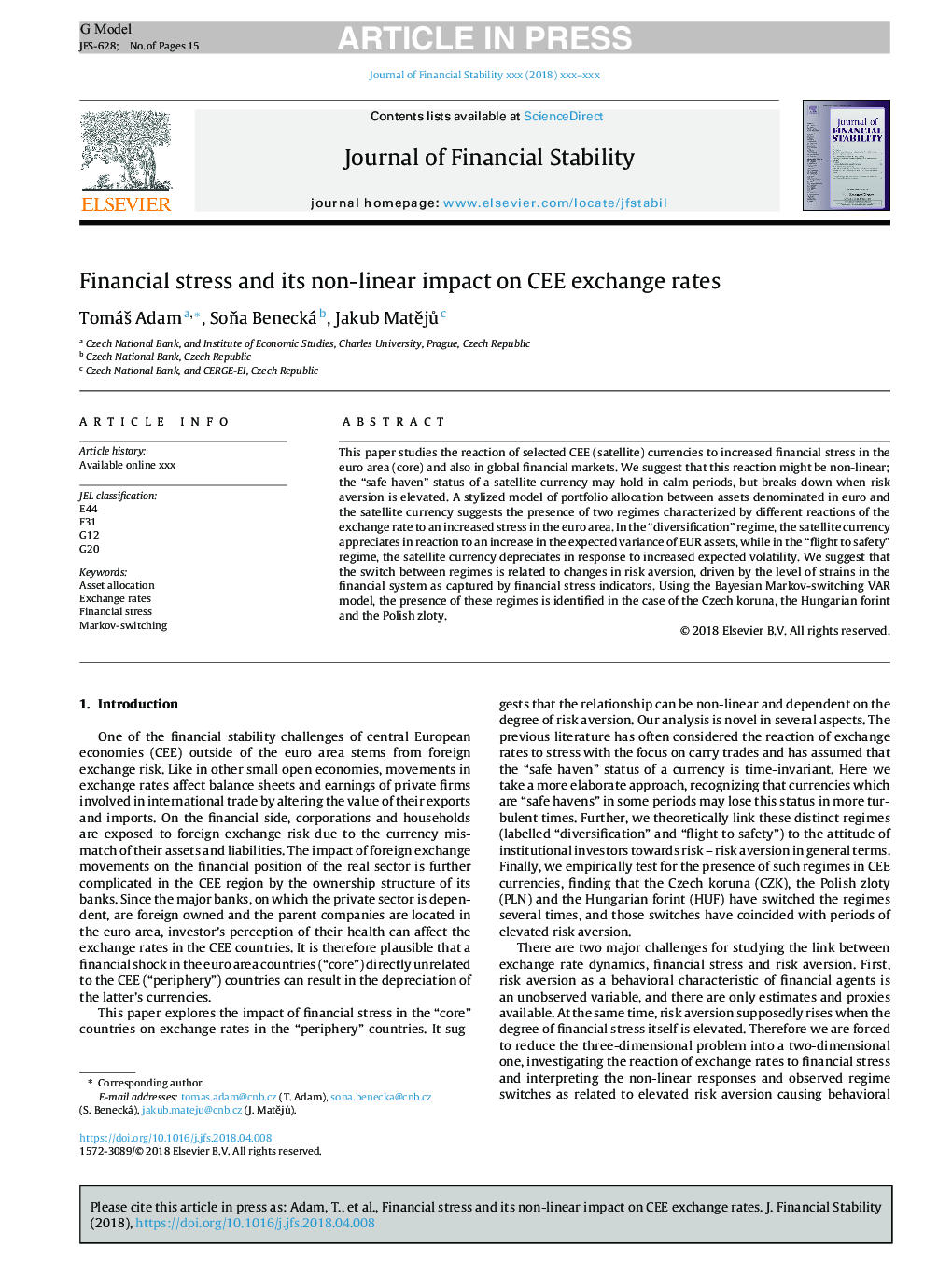| Article ID | Journal | Published Year | Pages | File Type |
|---|---|---|---|---|
| 7409119 | Journal of Financial Stability | 2018 | 15 Pages |
Abstract
This paper studies the reaction of selected CEE (satellite) currencies to increased financial stress in the euro area (core) and also in global financial markets. We suggest that this reaction might be non-linear; the “safe haven” status of a satellite currency may hold in calm periods, but breaks down when risk aversion is elevated. A stylized model of portfolio allocation between assets denominated in euro and the satellite currency suggests the presence of two regimes characterized by different reactions of the exchange rate to an increased stress in the euro area. In the “diversification” regime, the satellite currency appreciates in reaction to an increase in the expected variance of EUR assets, while in the “flight to safety” regime, the satellite currency depreciates in response to increased expected volatility. We suggest that the switch between regimes is related to changes in risk aversion, driven by the level of strains in the financial system as captured by financial stress indicators. Using the Bayesian Markov-switching VAR model, the presence of these regimes is identified in the case of the Czech koruna, the Hungarian forint and the Polish zloty.
Related Topics
Social Sciences and Humanities
Economics, Econometrics and Finance
Economics, Econometrics and Finance (General)
Authors
TomáÅ¡ Adam, SoÅa Benecká, Jakub MatÄjů,
